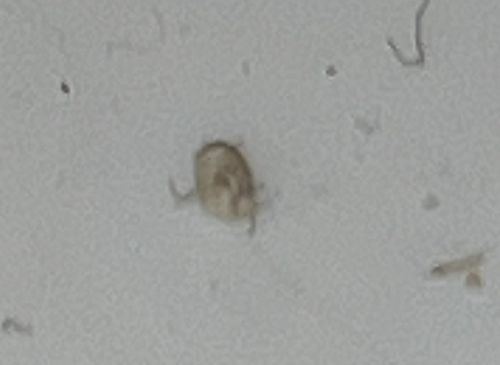Dust Mite
Scientific Name: Dermatophagoides species (e.g., Dermatophagoides pteronyssinus, Dermatophagoides farinae)
Order & Family: Acariformes, Pyroglyphidae
Size: Approximately 0.2-0.3 mm (too small to be seen without magnification)

Natural Habitat
Commonly found in homes and buildings, especially in bedding, upholstered furniture, carpets, and clothing, where they have access to their food source and suitable humidity levels.
Diet & Feeding
Dead skin cells (dander) from humans and animals, mold spores, pollen, and other organic debris.
Behavior Patterns
Dust mites thrive in warm, humid environments and feed on organic detritus, particularly shed human and animal skin cells. They are microscopic and cannot be seen with the naked eye. They reproduce quickly under favorable conditions. Their presence is often indicated by allergic reactions in susceptible individuals.
Risks & Benefits
The primary risk associated with dust mites is their allergenic properties. Their fecal matter and body fragments are potent allergens that can trigger asthma, allergic rhinitis (hay fever), and eczema in sensitive individuals. They do not bite or transmit diseases. There are no direct benefits to humans, but as decomposers, they play a minor role in breaking down organic matter.
Identified on: 9/2/2025